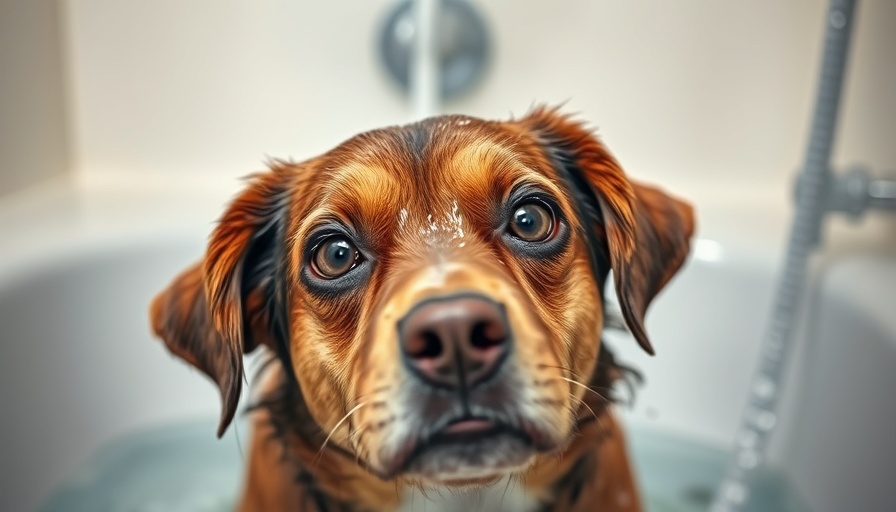
The Hidden Risks of Pica in Dogs
As dog owners, we adore our furry friends for their playful nature and curiosity. However, there comes a point when playful chewing morphs into a more alarming behavior — the act of ingesting non-food objects, commonly overseen but critically important to address. This condition, known as pica, can lead to severe health complications, making it essential for pet owners to recognize its signs, understand its implications, and act decisively.
What Causes Pica in Dogs?
Pica is characterized by a persistent urge to eat non-nutritive items, ranging from common household objects like socks and paper to potentially dangerous items like rocks or plastic. Various underlying factors could trigger pica in dogs. Possible causes include:
Nutritional deficiencies: Lack of essential nutrients or vitamins may push dogs to seek alternate sources to fulfill their cravings.
Anxiety and boredom: Dogs left alone for long periods or lacking sufficient stimulation may resort to pica as an outlet for their stress or pent-up energy.
Chronic pain: Dogs suffering from discomfort may chew on objects as a method of coping.
Compulsive behaviors: Similar to humans, dogs can develop compulsive habits that lead to repetitive actions such as inappropriate eating.
Understanding these triggers is fundamental in preventing pica-related incidents and finding suitable interventions for our beloved pets.
How to Identify Pica in Your Dog
Distinguishing between typical chewing and pica can be tricky. Most dogs engage in chewing as a normal part of exploring their environment or teething. However, pica becomes a serious concern when the dog consistently swallows the items they chew. Some common objects of pica include:
Rocks and gravel
Socks, underwear, and towels
Plastic items
Paper, cardboard, and tissues
String and rubber bands
Owners should be vigilant and take immediate action if their dog begins to repeatedly ingest such items to avoid life-threatening complications.
The Dangers of Pica: What's at Risk?
The risks associated with pica are significant and can lead to numerous health issues that may require emergency medical intervention, including:
Choking hazards: Large objects can block airways, posing immediate danger.
Intestinal blockages: If a dog swallows an object that cannot pass through their digestive tract, it can lead to serious complications necessitating surgical intervention.
Dental injuries: Repeated chewing on hard objects can cause severe dental damage.
Poisoning risks: Some items may contain toxic components that can be deadly.
As difficult as it may be to fathom, even seemingly harmless items can initiate a life-threatening scenario when consumed by our pets.
Steps to Diagnose and Treat Pica in Dogs
Tackling pica effectively starts with correct diagnosis. A veterinarian's involvement is crucial, as they can conduct necessary diagnostic tests to rule out underlying illnesses. Once medical conditions have been diagnosed, the next step involves exploring lifestyle factors, stress levels, and the home environment that could influence this behavior.
Treatment often necessitates a multifaceted approach, combining medical care, environmental modifications, and behavior training. Here are some actionable strategies:
Implement routine vet visits for health checks.
Introduce interactive toys and engaging activities to lower boredom.
Use positive reinforcement training to redirect your dog's focus to appropriate behaviors.
Consider dietary evaluations to address potential nutritional needs.
With patience and professional guidance, many dogs can overcome the challenges posed by pica and return to a healthy, balanced lifestyle.
Understanding Your Dog's Emotional Needs
As we strive to offer the best care for our pets, it's vital to foster emotional bonding with them. Dogs, similar to humans, experience feelings of stress and anxiety, which can lead to behaviors like pica. Below are emotional strategies to help enhance your dog's well-being:
Spend dedicated time with your pet each day to strengthen your bond.
Encourage socialization with other pets to mitigate loneliness.
Train your dog to follow commands, providing them with structure.
By giving our dogs the attention and care they need, we can challenge unhealthy behavior patterns and support their happiness and health.
Conclusion: Taking Action to Protect Your Dog
As a devoted dog owner, being proactive about your dog's health and safety should be your priority. If your furry friend starts exhibiting abnormal chewing habits, it’s time to take action. Consult your veterinarian to rule out any serious medical concerns and consider behavioral training approaches to curb the problem. Remember, our pets rely on us to keep them safe and healthy.
Ready to dive deeper into canine health and training? Subscribe to our newsletter for expert advice and updates to ensure your dog is happier and healthier than ever!
 Add Row
Add Row  Add
Add 




Write A Comment